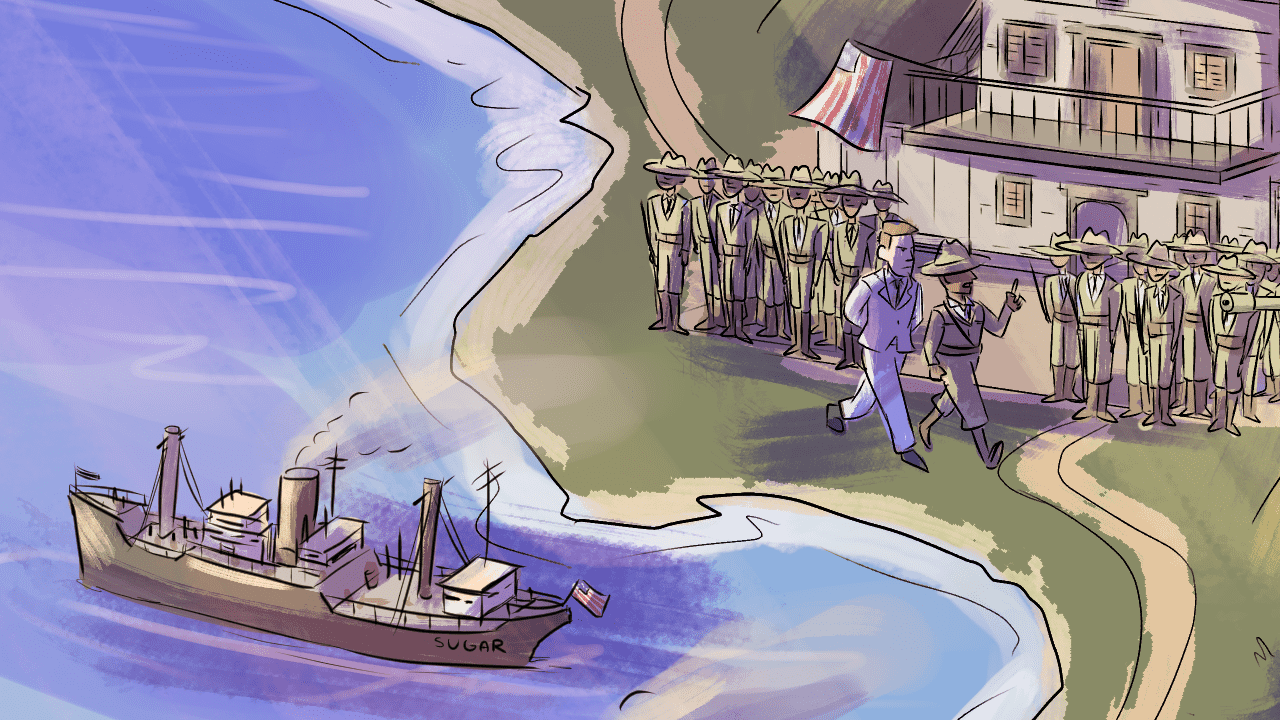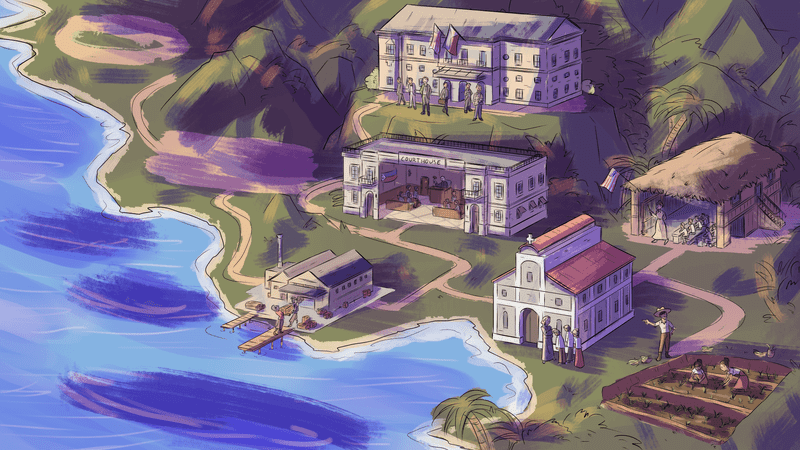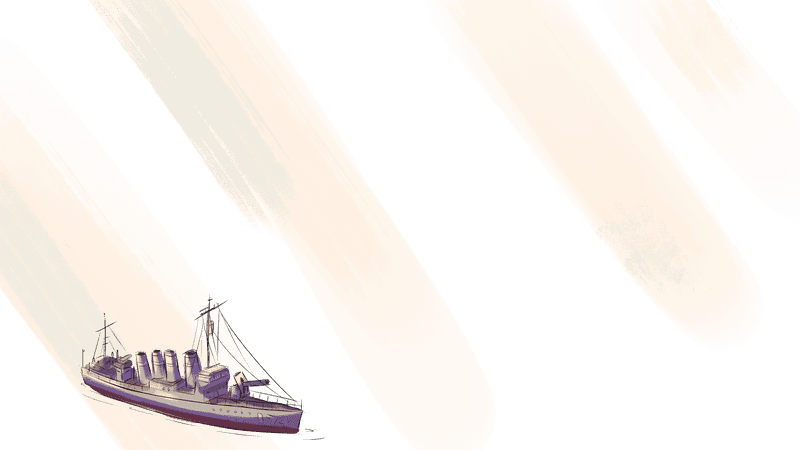Chapter One: Colonial Period
1902 – 1930s
Colonial Period
U.S. presence in the Philippines shifted to a civilian colonization.
The U.S. colonial presence in the Philippines shifted from a military occupation to a civilian colonization. The Philippine economy was quickly oriented toward the United States: crops such as sugar sailed for American markets. Americans publicized the “benevolence” of their enterprise. They even transported hundreds of Filipinos and put them on display in a crudely stereotypical exhibit at the 1904 World’s Fair in St. Louis, despite protests by Filipinos that the shows were racist and demeaning.
Bonds Between Nations
American missionaries and teachers boasted of the schools, hospitals, and roads built by the colonial government. They insisted that the United States was different from other empires. But its actions told a different story. As the U.S. military flexed its muscle in the Pacific, it challenged the British, French, and German empires. America was also becoming a leading power in the Pacific. It used its new colonial possessions—the Philippines, as well as Hawai’i and Guam, also annexed in 1898—to show its strength.
An anti-imperialist cartoon. The caption reads - “Showing how Uncle Sam has been an expansionist first, last and all the time.” Victor Gilliam, Arkell Publishing Company
Soon America would confront another rising empire in Asia: Japan.
In the Philippines, the United States established military and naval bases near Manila, on the fortified island of Corregidor, and throughout the archipelago. The U.S. Army recruited Filipinos directly into its ranks in a new force, the Philippine Scouts. By the 1920s, the Scouts outnumbered regular Army soldiers in the Philippines. They were some of the best-trained and most devoted soldiers in the U.S. forces. By law, they were soldiers in the United States Army, but they were paid half what American soldiers earned, and most were barred by law from becoming officers.
A handful of Filipino youths who attended the U.S. Military Academy at West Point did become Scout officers—including Vicente Lim, the first Filipino graduate of the USMA in 1914. During the years before 1948, all branches of the U.S. Armed Forces were segregated by race. For many years, Navy policy barred African Americans from the service, a practice of racial discrimination that ironically opened the door for Filipino sailors. Thousands of Filipinos joined the U.S. Navy in the 1920s and 1930s. Like the Philippine Scouts, they too were barred from the officer corps and restricted by law to the lowest naval ratings. Filling positions as cooks, messmen, and musicians, they kept the fleet going at sea.
Vicente Lim
February 24, 1888 – December 31, 1944
First Filipino West Point Graduate and Celebrated WWII Officer
Vicente Lim was one of the most renowned officers of the battle of Bataan and led Guerrilla resistance bands after defenses fell. As a child he was a messenger for the revolutionaries fighting against an expanding American empire. In 1914, Lim became the first Filipino to graduate from the U.S. Military academy at West Point, where he battled discrimination. Lim served in the Philippine Scouts, and, in 1936, accepted the rank of Brigadier General in the newly formed Philippine Army. When war broke, he led a division that would become one of the most effectives forces at Bataan. In 1942, after nearly four months of fighting, Lim and the 41st division surrendered. Though weakened by his time in a Japanese prison camps, Lim continued the fight, coordinating bands of Guerrillas. He was captured in June 1944 and died in the Japanese prison at Fort Santiago.
Decisions by the U.S. Supreme Court declared that Filipinos were not citizens of the United States, but held a second-class status as “nationals” instead. This was sufficient to permit Filipinos to migrate to Hawai’i and the West Coast. Tens of thousands of Filipinos arrived, most in the 1920s and 1930s. They found jobs on farms, in canneries, and at restaurants and hotels, and forged communities alongside other Asian immigrants.
In the U.S., Filipinos faced discrimination. After the Great Depression began, anti-Filipino violence increased. In 1924, local forces shot some two dozen striking workers at Hanapepe in Hawai’i. A few years later, in 1930, four days of white rioting in Watsonville, California, left one Filipino worker dead.
In the Philippines, farmers, fishers, and workers continued to struggle to make ends meet. Some dreamed of the independent nation that had been declared in 1898. But few dared to fly its flag, outlawed in 1903 by colonial governor and future U.S. President, William Howard Taft.
Opposition to colonial rule continued through political movements, unions, and religious groups. Newspapers were regularly censored, so many Filipinos turned to music, drama, and illustration to express their views.
Small concessions by the United States included the establishment of the Philippine Assembly. Members of the Assembly had little power, and only a small percentage of Filipino men even had the right to vote in elections. Women did not gain the right to vote in the Philippines until 1937.
The passage in 1916 of the Jones Act promised independence to the Philippines at some unstated future date. Although the new generation of Philippine politicians, such as Manuel Quezon and Sergio Osmeña, welcomed the Jones Act, they understood that it was only a partial step. The law left it up to the United States to decide when Filipinos would be ready for independence—not Filipinos themselves.
The United States would decide when the Philippines would gain independence—not Filipinos.
Next Section
1934 – 1941
The Road to War
With the global Great Depression and military tensions rising, war was coming.
Explore



